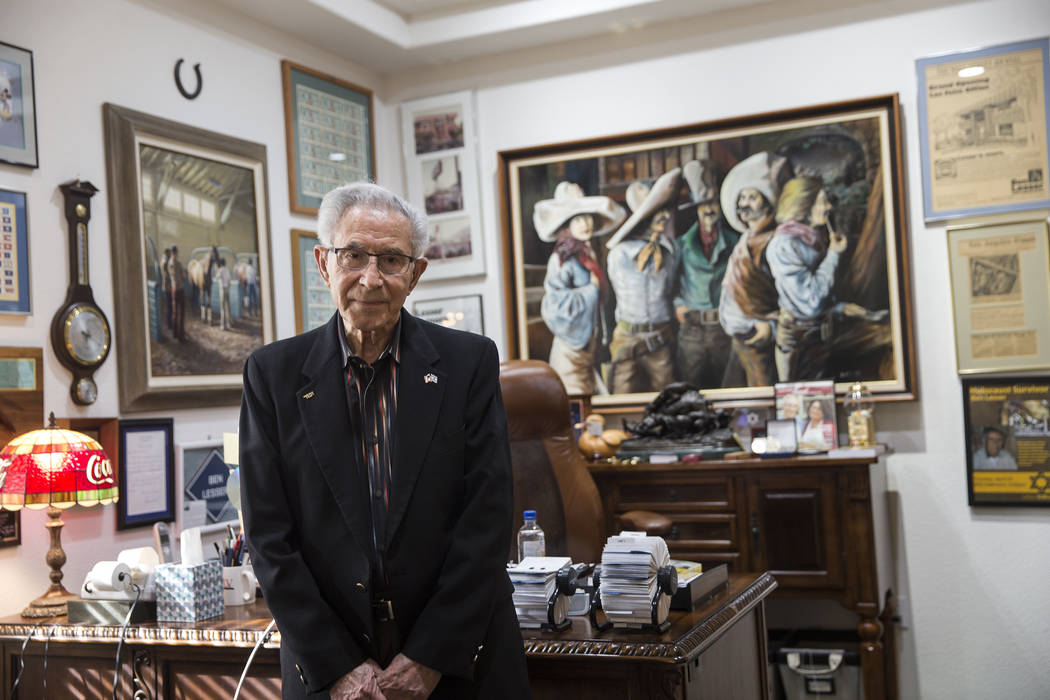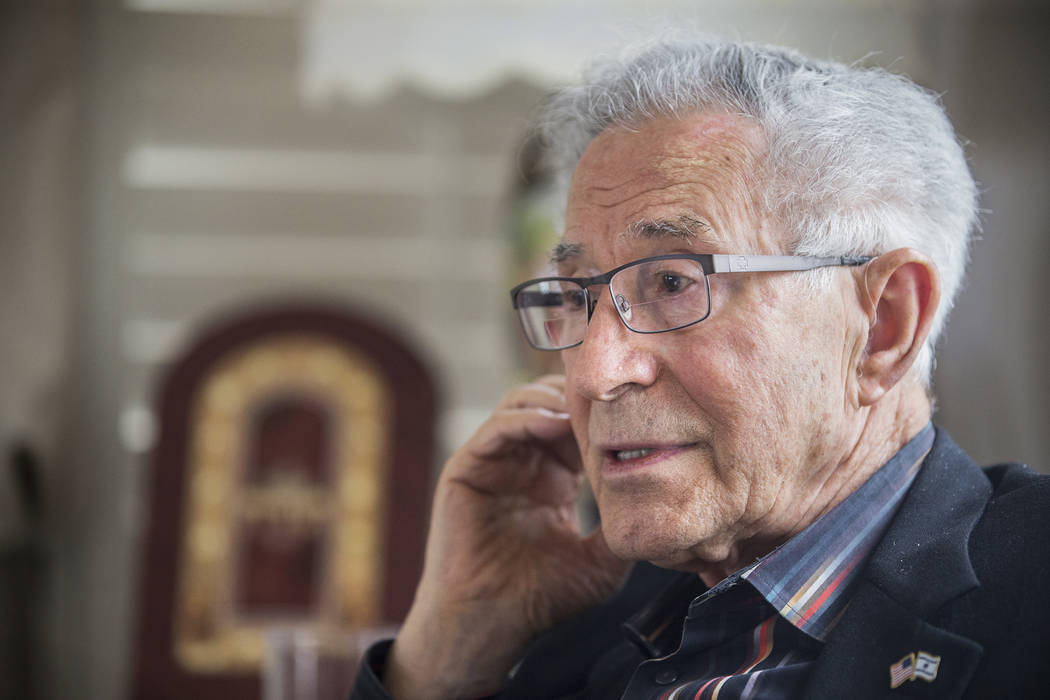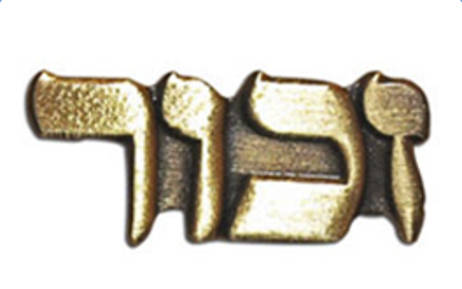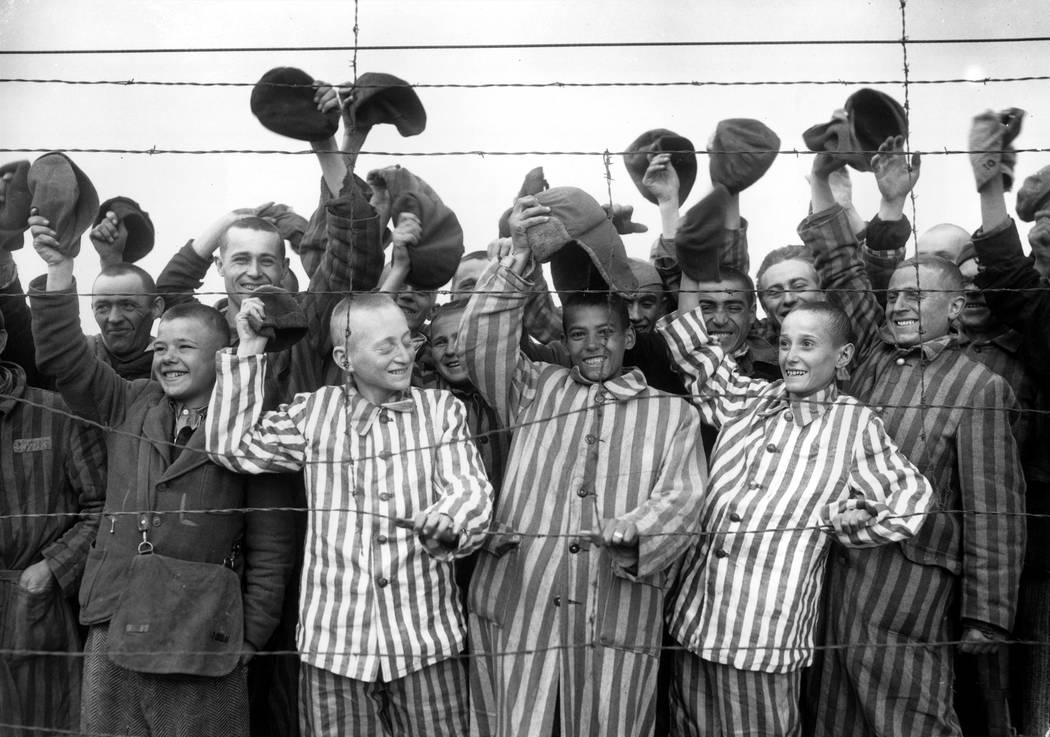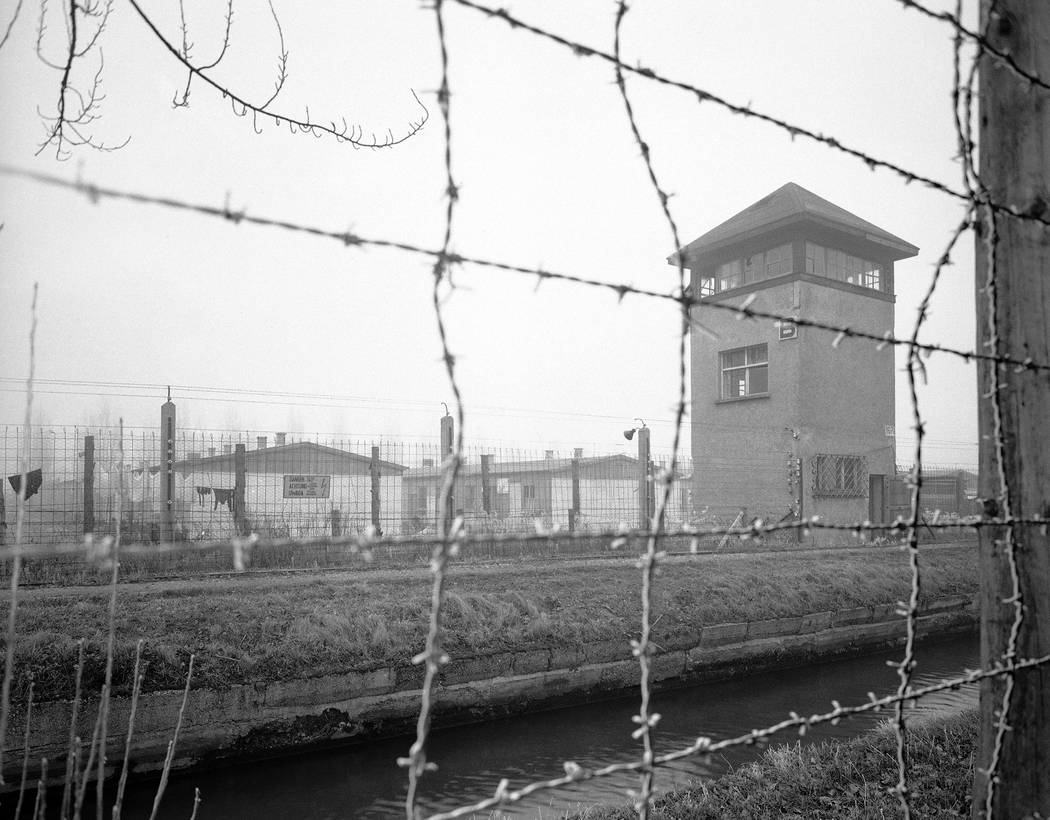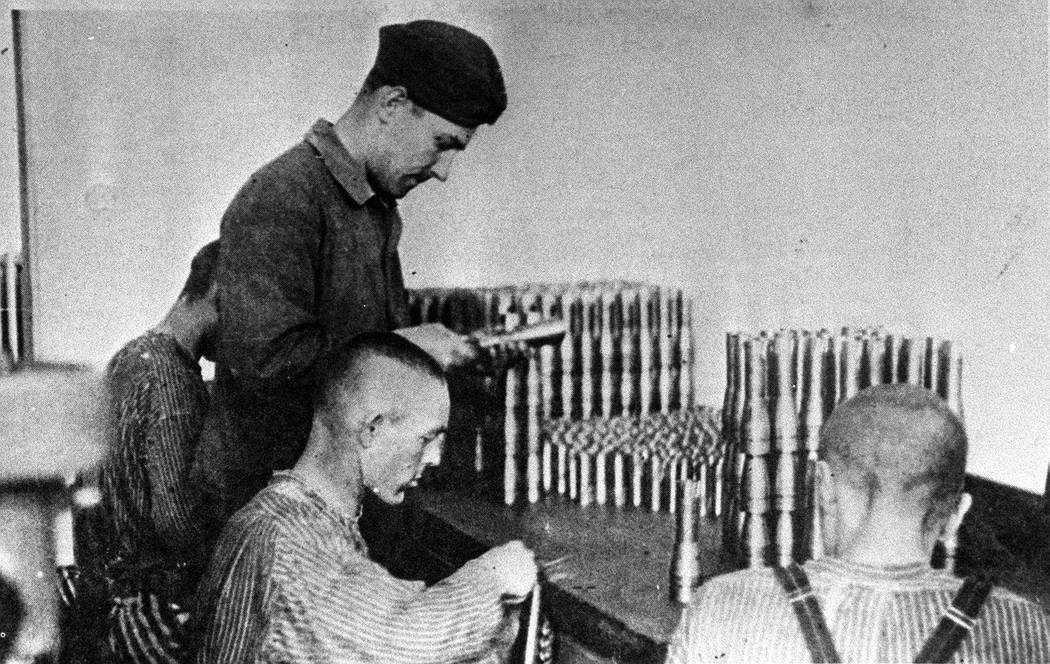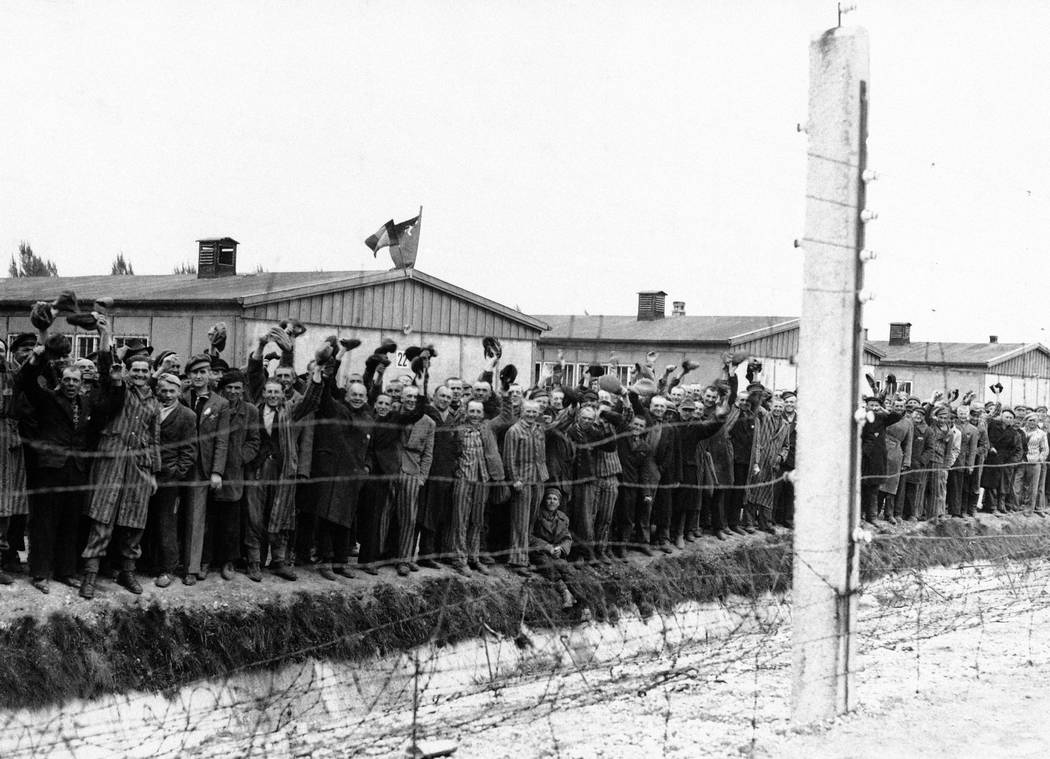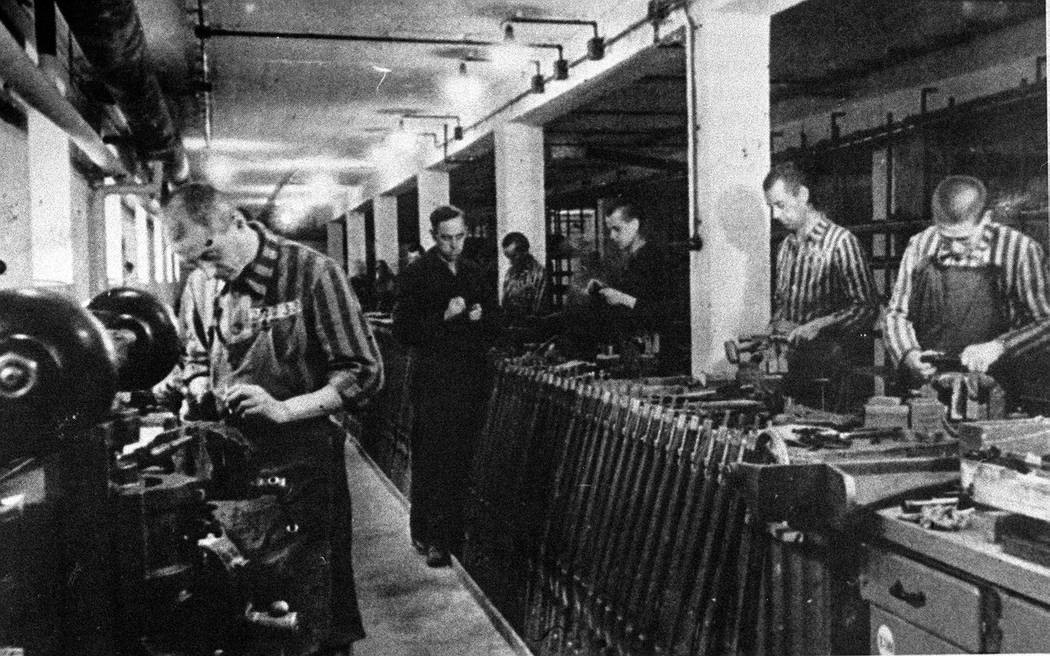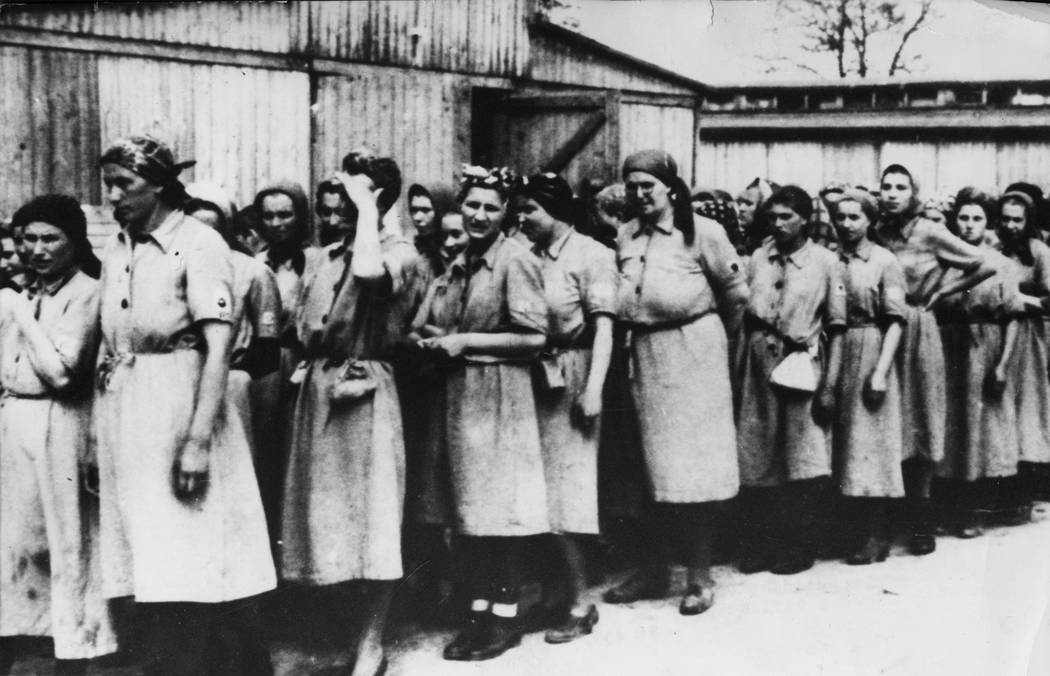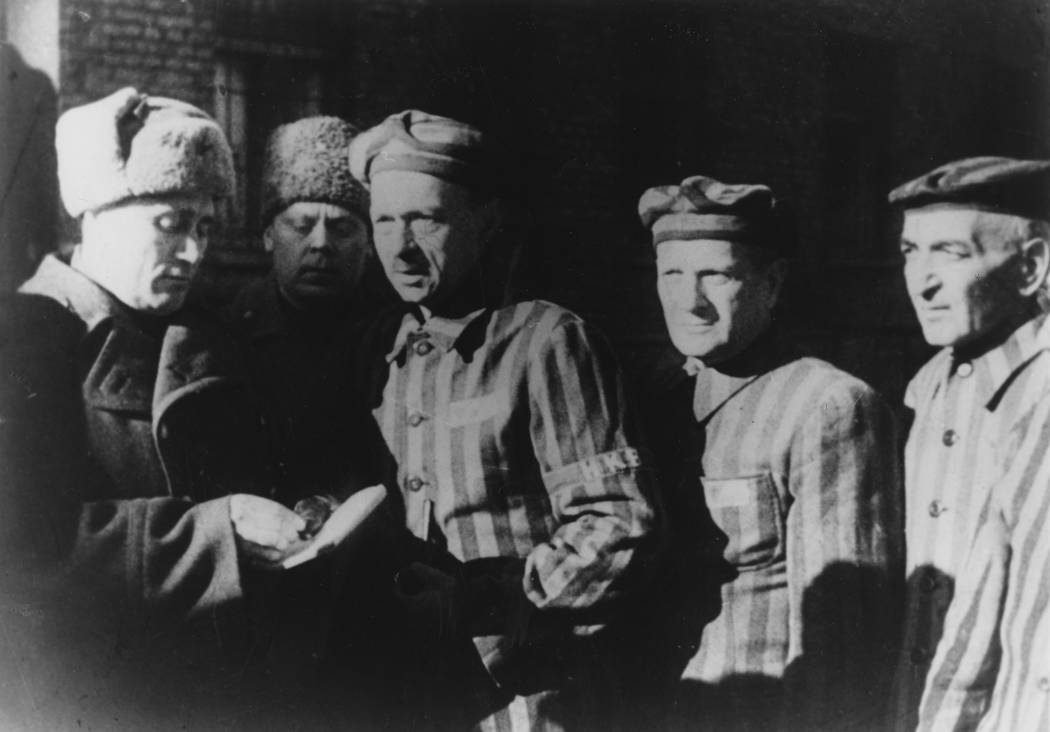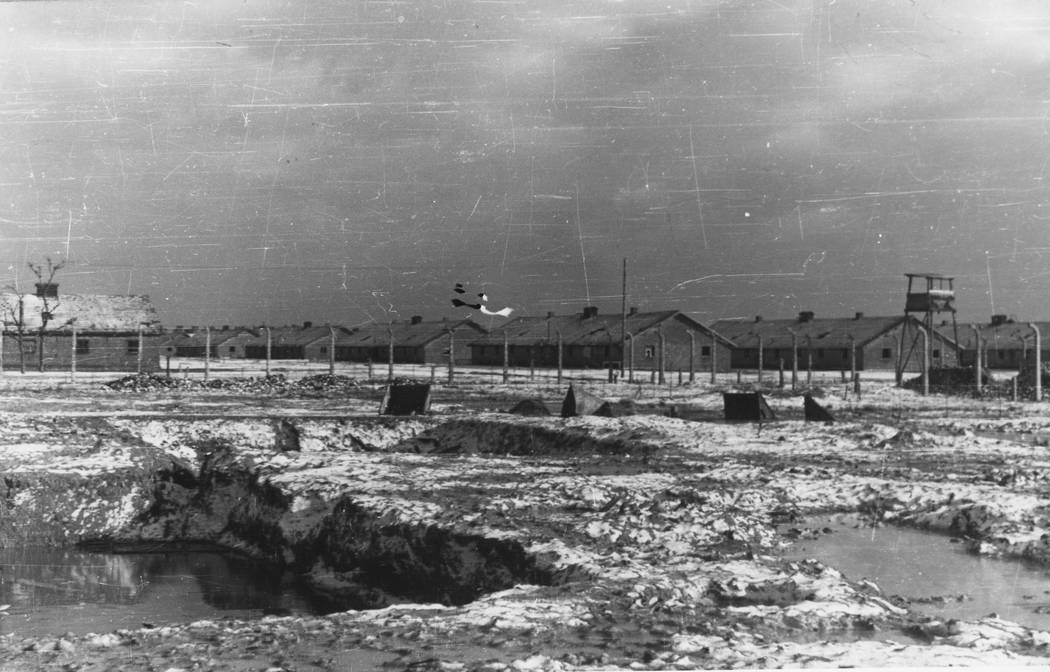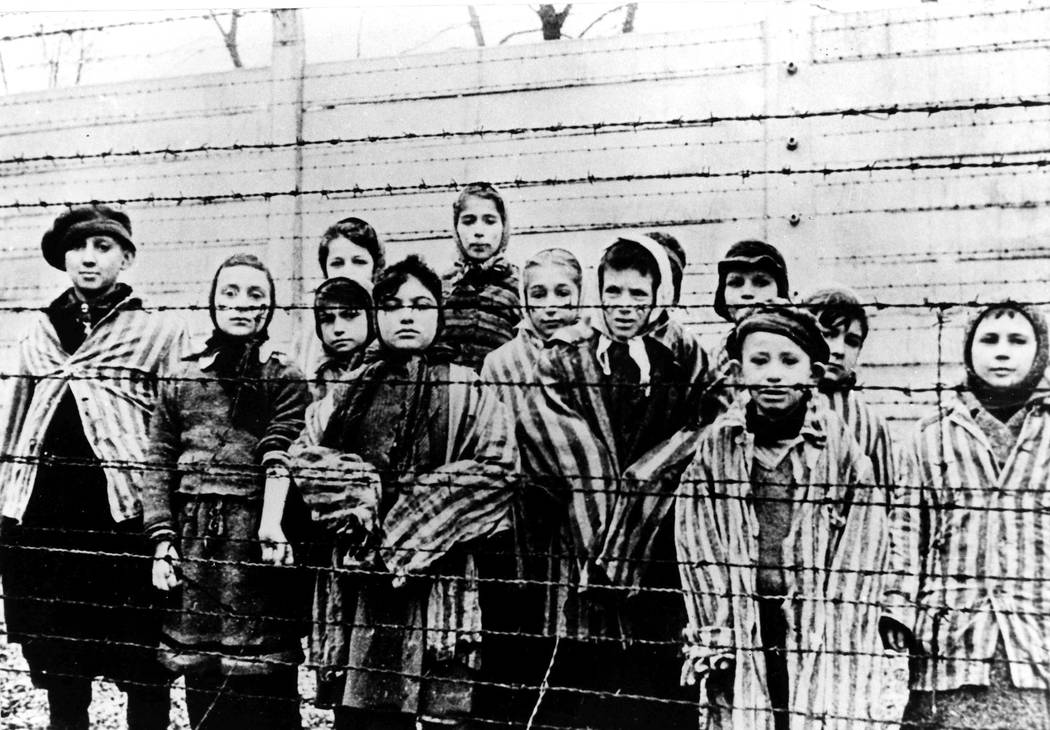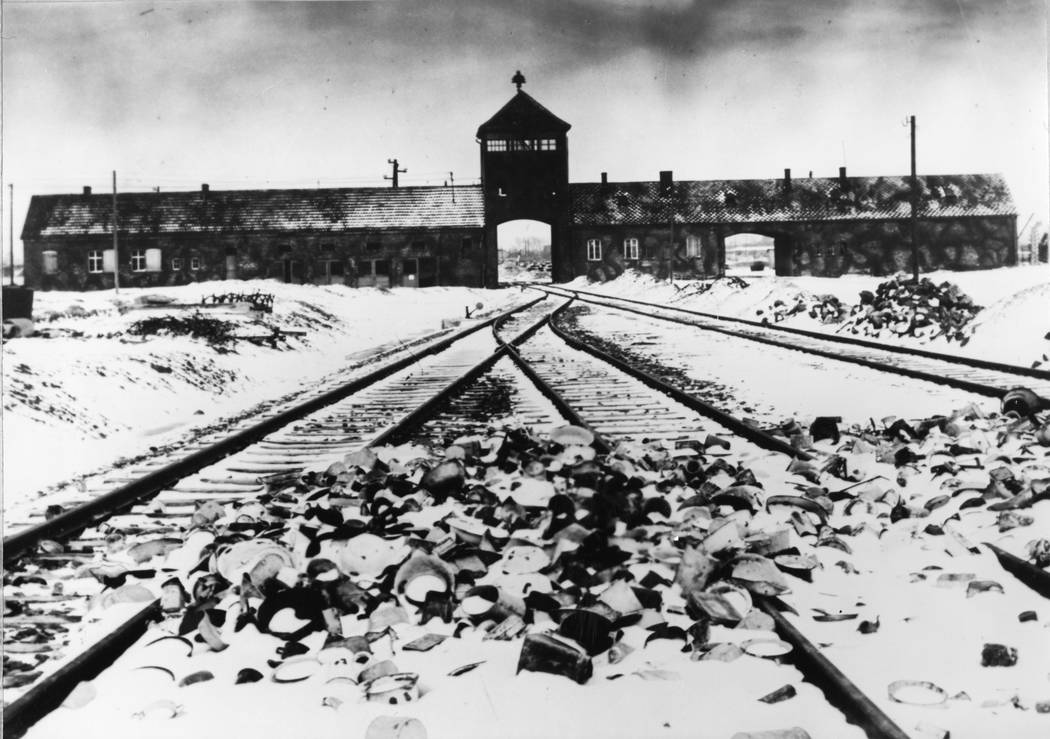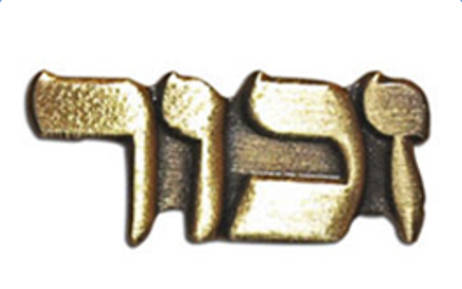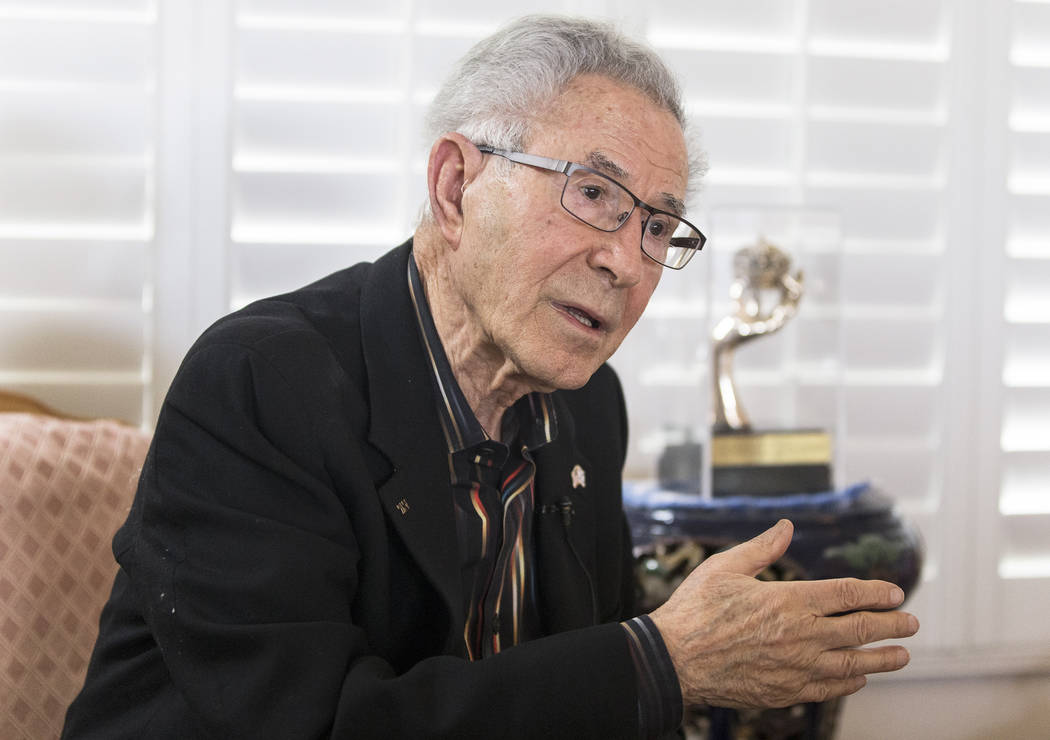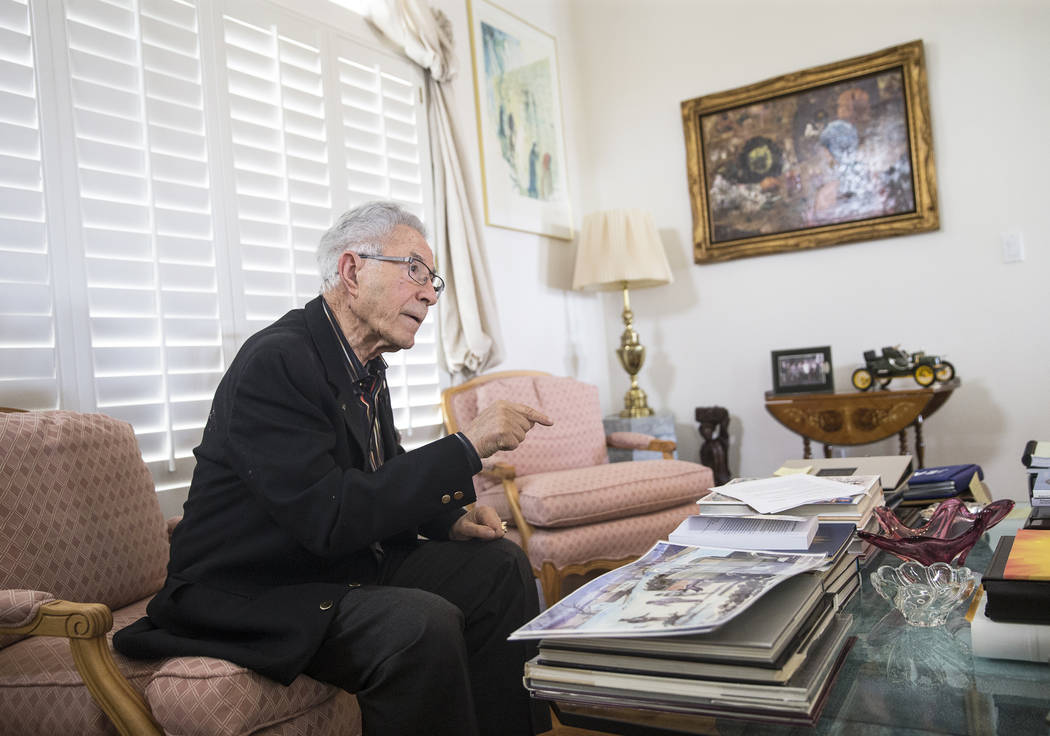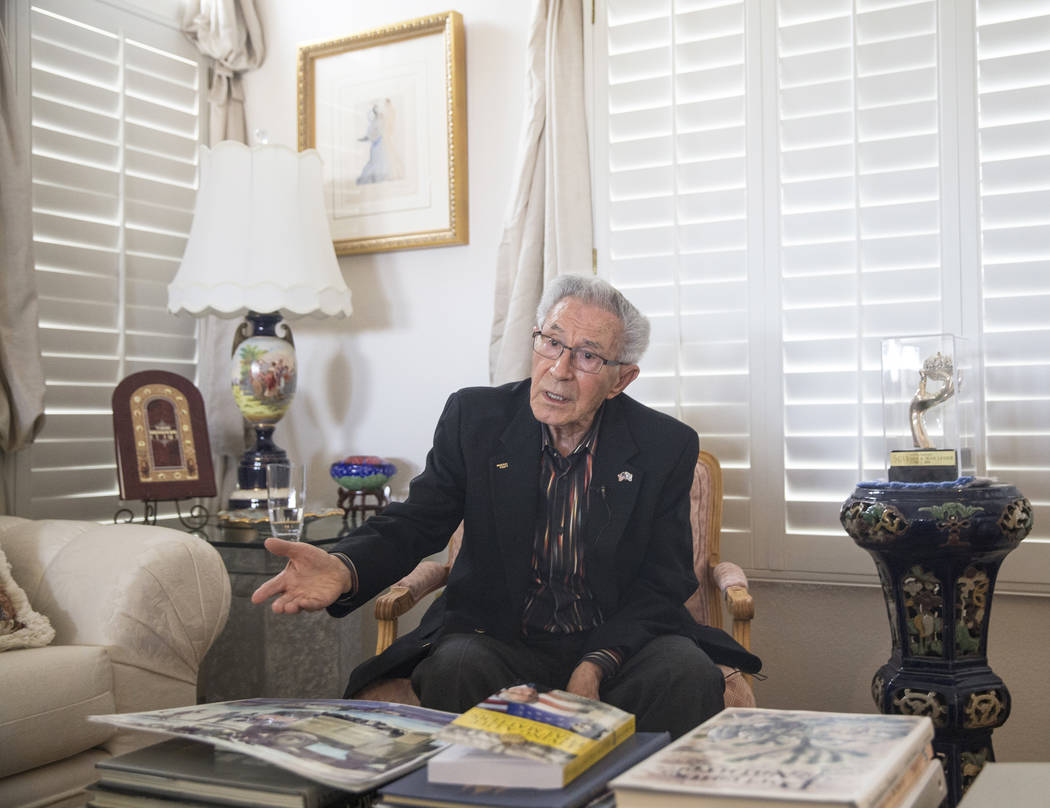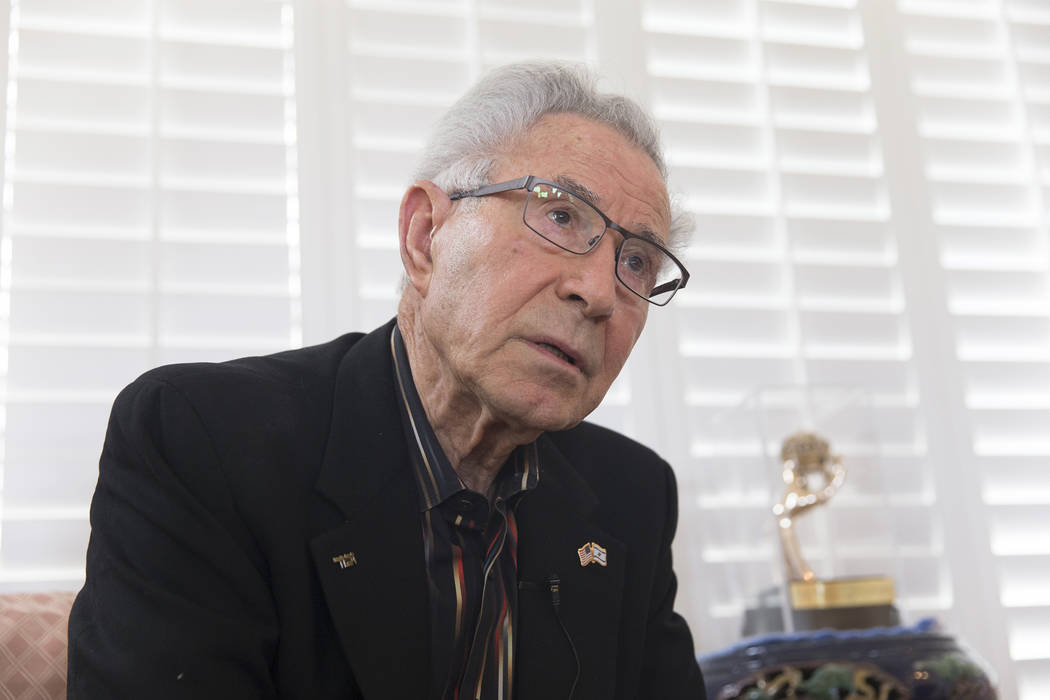Las Vegas Holocaust survivor creates website to fight hate
When Ben Lesser saw the few seconds of film taken more than a half-century ago, he wasn’t sure what to think.
The dark-haired guy — just a kid, really — in the film looked like him, or at least like Lesser used to look back in April 1945 when Dachau, one of the concentration camps in which he was imprisoned during the Holocaust, was liberated.
Others thought so, too, including the producers of the 2015 History channel documentary “Die Befreier” (“The Liberators: Why We Fought”) about the liberation of Dachau. Lesser appeared in the documentary, and when the producers found the clip while going through outtakes, they noticed the resemblance and sent it to Lesser.
Images from a tragic past
Watching the grainy images was, Lesser says, a jarring, heartbeat-skipping experience. He didn’t know whether he was the man in the film and conceded that there’s no way to know for sure.
Lesser now believes that it is him and that the film was taken not at Dachau but at Buchenwald on the night before Lesser and his cousin began a harrowing journey by rail car to Dachau. It was there that Lesser was liberated, marking the end of years of persecution and imprisonment in ghettos, labor camps and concentration camps that began when he was about 11.
Lesser has spent much of his adult life sharing the story of his Holocaust experience. He’s spoken to hundreds of school groups and gatherings over the past two-plus decades. His nonprofit Zachor Holocaust Remembrance Foundation (www.zachorfoundation.org) — “zachor” means “remember” — educates future generations about the Holocaust.
He’s written a book, “Living a Life that Matters: From Nazi Nightmare to American Dream.” And his latest project is an interactive initiative called I-Shout-Out (www.i-shout-out.org), through which students and others can publicly record and share their own “shout outs” against bullying, intolerance and hatred.
Lesser’s lifelong goal has been to educate others about the Holocaust so that nothing like it ever will happen again. The other lesson he tries to impart: Just as his story didn’t end after the Holocaust, life offers everybody the chance to begin again.
“Most schools, they teach ‘Night’ and Anne Frank, but both of those ended with liberation,” Lesser says. “My book (goes to) the present, and it’s inspirational because they see all that I went through and I was able to turn my life around and make a good life for myself.”
Lesser, 88, was born in Krakow, Poland. Of seven family members — himself, two brothers, two sisters and his parents — only Lesser and his sister Lola survived the Holocaust. During World War II, Lesser was imprisoned in Auschwitz-Birkenau, Durnhau labor camp, Buchenwald and, finally, Dachau, days before Allied soldiers arrived.
Lesser says the film clip probably was recorded before he, his cousin and other prisoners boarded cattle cars for a brutal trip to Dachau and freedom. There, after liberation, Lesser’s cousin died and Lesser would spend weeks in an infirmary, sick and unconscious.
A whole new story
But, Lesser says, “life after liberation is a whole new story,” and after immigrating to the United States, “I was able to make a beautiful life again.”
Here, Lesser drove a truck for 25 years. The Southern Nevada resident was a successful Realtor. He raised a family. Now, his goal is to make sure that the world never forgets the Holocaust. Toward that end is his I-Shout-Out initiative, where people can visit a website (I-Shout-Out.org)and take a public stand against anti-Semitism, discrimination, hatred and bigotry online.
“The idea is that that shout-out will remain on that site for generations to come,” Lesser says. “Your great-grandchildren can punch in your name, and your shout-out will come up,” serving as a lifelong pledge anybody can see.
“When I speak in schools, many of the kids ask me, ‘We hear your story, but what can I as an individual do?’ Now I’m telling them that you can go viral, you can let your voices be heard and tell the world how you feel.”
He’s hoping to collect at least 6 million shout-outs to give voice to the Jewish people whose voices were silenced during the Holocaust. And after that, he says, “we’ll go for 13 million because there were actually between 11 (million) and 13 million people slaughtered.”
Contact John Przybys at jprzybys@reviewjournal.com or 702-383-0280. Follow @JJPrzybys on Twitter.
HOLOCAUST REMEMBRANCE DAY
Holocaust Remembrance Day, or Yom Hashoah, is observed each year on the 27th day of the Hebrew month of Nisan. This year, the observance is April 24.
According to the United States Holocaust Memorial Museum (www.ushmm.org), the observance was created by the Knesset, the Israeli parliament, in 1951, its date chosen to mark the anniversary of the Warsaw Ghetto Uprising and the liberation of concentration camps in Western Europe.
The observance's intention is to remember the millions of victims of the Holocaust, the systematic, state-sponsored persecution and mass murder of millions of European Jews and others by Nazi Germany from 1933 to 1945.
Because the Hebrew calendar, which is used to determine the date of Holocaust Remembrance Day, is a lunar-based calendar, the date changes from year to year in the United States, according to the museum. In many places, observances and remembrance ceremonies also are held during the Week of Remembrance, which begins on the Sunday before Holocaust Remembrance Day and continues through the following Sunday.
The museum notes, too, that the dates of the Days of Remembrance differ from the date of International Holocaust Remembrance Day, which is Jan. 27. The United Nations established that date in 2005, commemorating Jan. 27, 1945, the day that the Auschwitz-Birkenau was liberated.



